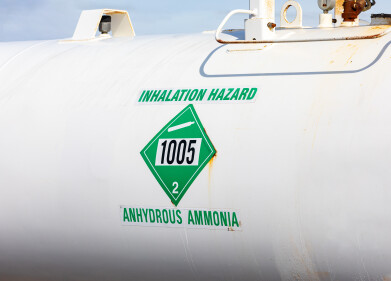Fuel for thought
So Moved!
Feb 21 2021
Motions — an essential part of the consensus process — support many aspects of technical committee business. Only members can make a motion regarding meeting business.
Note that the Regulations Governing ASTM Technical Committees take top priority in committee work, but Robert’s Rules of Order, including its motion guidance, supplement the Regs to move committee business forward.
Many motions require only a simple majority, others a two-thirds affirmative. (See Regs Corner below for specific guidance about motions to rule a negative vote not persuasive or not related.) Motions that need a majority include those to:
• Approve the agenda,
• Approve minutes,
• Place an item on ballot,
• Establish a task group,
• Adjourn a meeting,
• Make an executive administrative decision (meeting location, for example), and
• Amend a motion.
Also in need of a majority are motions to “lay on the table” and to postpone:
• To “lay on the table” or “table” a topic means you will set it aside temporarily, usually because something more urgent has come forth (not to be confused with the motion to postpone to a certain time; see next item).
• To “postpone to a certain time” means that you are postponing the vote/discussion to a decided time (a few hours, the next meeting etc.). This action could be made because you need more information or to wait for a specific member, etc.
And last but not least: A motion to “call the question” (also requiring a two-thirds affirmative) cannot automatically end a discussion. A member can move to call the question/move the previous question, which requires a second and then a two-thirds affirmative vote. If that motion is approved, then the chair or subcommittee chair can lead the assembly through motions and voting on the underlying topic.
To learn more about using Robert’s Rules of Order in ASTM meetings, consider participating in an upcoming virtual
training session. For additional information, please contact your staff manager.
REGS CORNER
Motions and Negative Votes
As part of handling negative votes, the Regulations Governing ASTM Technical Committees covers two specific motions: not related and not persuasive motions. Both of these motions require an explanation of the reason for the action.
Not Related Motions — A motion at a meeting, or via ballot, to find a negative vote not related to the item being balloted requires an affirmative vote of at least two thirds of the combined affirmative and negative votes cast by the voting members. Negative votes found to be not related shall not be factored into the percent affirmative requirements for consensus. The subcommittee shall treat the unrelated negative as an item of new business.
Not Persuasive Motions — A motion at a meeting, or via ballot, to find a negative vote not persuasive requires an affirmative vote of at least two thirds of the combined affirmative and negative votes cast by the voting members. If the motion or ballot fails, the balloted item is removed from the ballot.
Digital Edition
PIN 25.5 Oct/Nov 2024
November 2024
Analytical Instrumentation - Picturing Viscosity – How Can a Viscometer or a Rheometer Benefit You? - Sustainable Grease Formulations: Evaluating Key Performance Parameters and Testing Method...
View all digital editions
Events
Jan 20 2025 San Diego, CA, USA
Jan 22 2025 Tokyo, Japan
Jan 25 2025 San Diego, CA, USA
SPE Hydraulic Fracturing Technology Conference and Exhibition
Feb 04 2025 The Woodlands, TX, USA
Feb 05 2025 Guangzhou, China



















